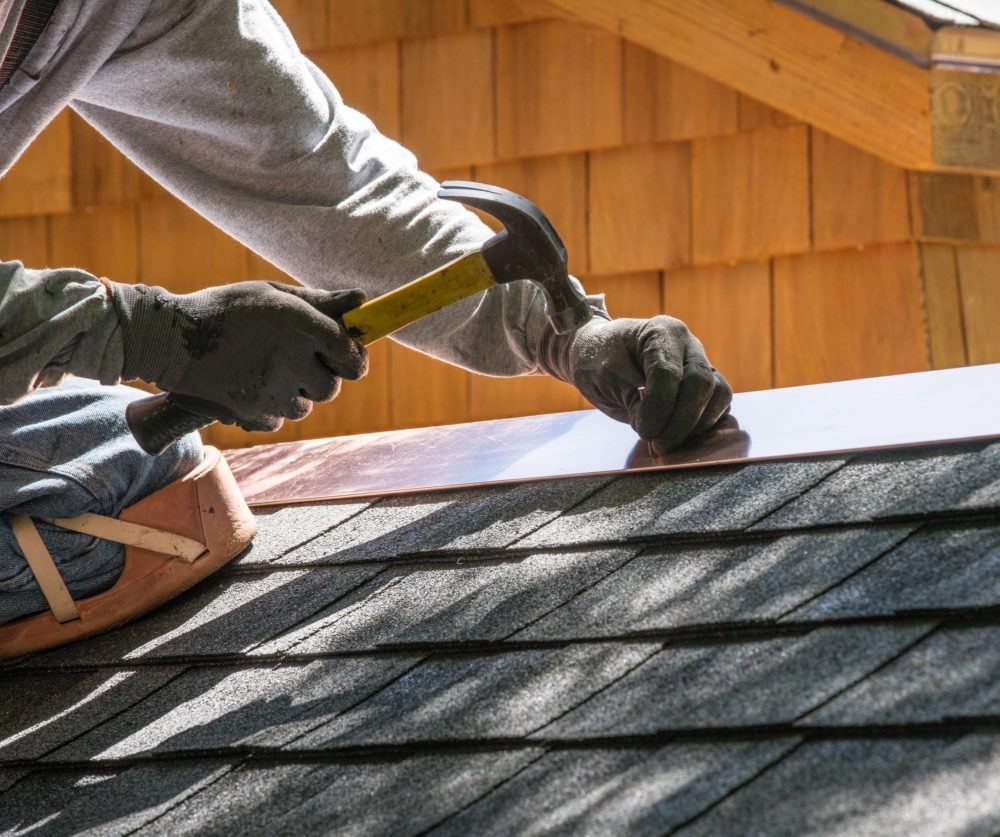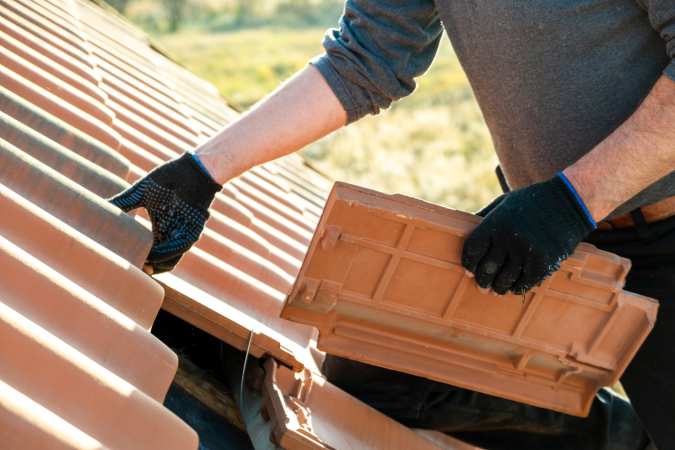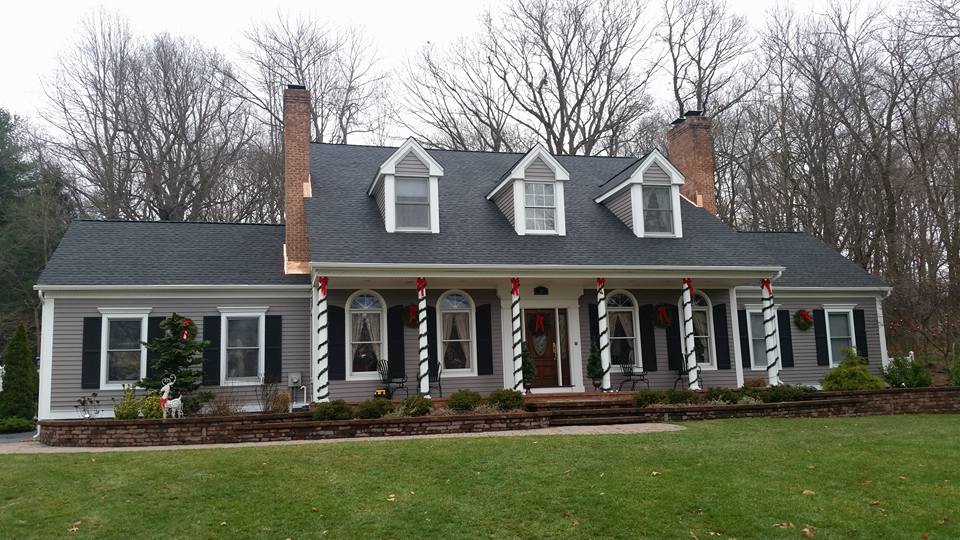How Long Does it Take to Replace a Roof?
Maintaining a good roof is essential to the structural integrity and safety of a home in Connecticut. It safeguards against the elements, helps in maintaining comfortable indoor temperatures, and contributes to the property’s aesthetic appeal. Given the vital role of a roof, ensuring it remains in prime condition is a top priority for homeowners. As roofs age and wear out, they require replacement. Understanding the timeline for this significant process is crucial for effective planning and to minimize disruption to daily life.
The article delves into the timeline of roof replacement, specifically focusing on what homeowners in Connecticut can expect. The process, from the initial assessment to the final inspection, typically takes between one to twelve days, depending on various factors such as the size of the roof, the roofing materials used, and weather conditions. Highlighting the importance of selecting professional roofing contractors in Monroe, CT, this guide emphasizes their role in ensuring a smooth, efficient replacement process. Our expertise not only ensures high-quality workmanship but also plays a critical role in completing the project within the expected timeframe.
Understanding the Basics of Roof Replacement
Roof replacement is an extensive process that involves the complete removal of an existing roof down to the deck, followed by the installation of a new roofing system. This process is fundamentally different from roof repair, which typically focuses on fixing specific damage or wear areas on the roof. Roof repair might involve patching holes, replacing a few shingles, or sealing leaks, and is generally considered a less extensive and less costly option. However, when a roof is beyond repair, due to extensive damage, age, or when it fails to provide adequate protection, a full roof replacement becomes necessary.
The roof replacement process encompasses several key steps to ensure the longevity and durability of the new roof. Here’s a brief overview:
- Initial Inspection and Estimate: A professional roofing contractor assesses the condition of the existing roof to determine the need for replacement. This stage often includes taking measurements and discussing material options to provide an accurate estimate.
- Choosing Materials: Homeowners select the roofing materials, which can range from asphalt shingles, metal panels, tiles, or other materials, based on their preferences, budget, and the architectural style of their home.
- Permitting: Obtaining the necessary permits from local authorities is a critical step that ensures the project complies with building codes and regulations.
- Removal of Old Roof: The existing roof materials are carefully removed down to the roof deck. This step is crucial for inspecting the underlying structure for any damage that needs repair before installing the new roof.
- Preparation of Roof Deck: Ensuring the roof deck is in good condition is vital for the longevity of the new roof. This may involve replacing damaged wood or applying a waterproofing underlayment.
- Installation of New Roofing Material: The new roofing material is installed, starting from the bottom edge of the roof up to the peak, following the manufacturer’s specifications for optimal performance.
- Cleanup and Final Inspection: After the installation, the site is cleaned of debris, and a final inspection is conducted by the contractor to ensure the new roof meets all quality and safety standards.

Key Factors Influencing Roof Replacement Time
When it comes to roof replacement, the timeframe can vary significantly based on several key factors. Understanding these can help homeowners, especially those working with a roofing company in Connecticut, like CMW Roofing & Siding based in Monroe, CT, to better anticipate the duration of their project. Here’s a closer look at the main elements that influence the time it takes to replace a roof:
Roof Size
The square footage of a roof is directly proportional to the time required for its replacement. Simply put, larger roofs require more materials, labor, and time to complete. A small, single-story home may take only a few days to re-roof, while a large, multi-story building can take several weeks. The overall size of the roof determines the amount of work involved in both removing the old materials and installing the new ones, making it one of the most significant factors affecting the project’s timeline.
Roof Complexity
The design features of a roof, such as its slope, pitch, and the presence of elements like chimneys, skylights, and dormers, can significantly impact the duration of the replacement process. A roof with a steep slope or complex design requires more time for installation due to the additional safety measures and the complexity of working around these features. These aspects necessitate careful planning and execution, which can extend the overall timeframe.
Roofing Material
Different roofing materials have varying installation times, which can influence the project duration. For example, asphalt shingles, one of the most common roofing materials, typically require less time to install than metal roofing or tiles. Each material has its own set of challenges and installation processes. Some materials may require additional structural support or preparation, further affecting the timeline.
Weather Conditions
Weather plays a pivotal role in scheduling and completing roof replacement projects. Ideal weather conditions are crucial for a smooth and efficient roofing process. Rain, snow, or even too much wind can delay the start of the project or prolong the duration due to work stoppages. Roofing companies in Connecticut, such as CMW Roofing & Siding, are well-versed in managing these challenges by carefully planning the project around the local weather patterns to minimize delays and ensure the safety of the workers and the integrity of the installation.

The Typical Timeline for Roof Replacement
Undertaking a roof replacement is a significant project that requires careful planning and execution. For homeowners working with a roofing company in Connecticut, like CMW Roofing & Siding based in Monroe, CT, understanding the typical timeline for such a project can help set realistic expectations. Here’s an overview of the stages involved in roof replacement and the time each typically requires:
Preparation Stage
The preparation stage is crucial for a smooth roof replacement process. This initial phase includes conducting a thorough inspection of the existing roof to assess its condition, identifying any underlying issues that need to be addressed before installation. Following the inspection, the necessary permits must be obtained from local authorities, which can vary in time depending on the municipality. The preparation stage also involves scheduling the project, which depends on the contractor’s availability and weather conditions. Generally, this phase can take from a few days to several weeks.
Removal of Old Roof
The actual work begins with the removal of the old roofing materials. This process can be quick or time-consuming, depending on the roof’s size and the complexity of its design. The removal stage involves stripping all the old shingles, underlayment, and, if necessary, the decking material. This stage is critical to ensuring that the new roof is being laid on a solid foundation. On average, the removal of the old roof can take one to two days, although larger or more complex roofs may require additional time.
Installation of New Roof
Installing the new roof is the most time-intensive part of the process. This stage includes laying down new underlayment, installing the chosen roofing materials, and fitting any additional elements such as flashing around chimneys and vents. The duration of the installation phase depends on the type of roofing material being used, the roof’s size, and its complexity. Asphalt shingle roofs, for example, might be installed in a few days, whereas metal roofs or tiles could take longer. On average, homeowners can expect this phase to last anywhere from a few days to a week.
Cleanup and Final Inspection
After the new roof is installed, there’s still work to be done. The cleanup stage involves removing any debris and leftover materials from the property, ensuring the home’s exterior is left in pristine condition. Following cleanup, a final inspection is conducted by the roofing company in Connecticut to ensure the installation meets all quality and safety standards. This phase is crucial for the homeowner’s peace of mind and the longevity of the new roof. Typically, cleanup and inspection can be completed within a day.
Understanding these stages and their typical durations helps homeowners plan accordingly for their roof replacement projects. Working with an experienced roofing company in Connecticut, such as CMW Roofing & Siding, ensures that each step is executed efficiently and to the highest standards, ultimately leading to a successful and timely completion of the project.
Factors That Can Extend the Roof Replacement Timeline
While a typical roof replacement project follows a relatively straightforward timeline, certain variables can introduce delays, extending the overall duration. Recognizing these potential factors is essential for homeowners to maintain realistic expectations and plan accordingly. Here are some key elements that can affect the timeline of a roof replacement project:
Unexpected Repairs
One of the most common reasons for extended timelines in roof replacement projects is the discovery of unexpected repairs. Once the old roof is removed, underlying issues such as structural damage, rot, or mold within the decking or support structures may be uncovered. These issues must be addressed before proceeding with the installation of the new roof to ensure the safety and integrity of the home. Depending on the extent of the damage, repairs can add days or even weeks to the project timeline.
Weather Delays
Adverse weather conditions are another significant factor that can delay roof replacement projects. Rain, snow, high winds, or extreme temperatures can halt work, as roofing requires specific conditions to ensure the safety of the workers and the effectiveness of the installation process. For instance, asphalt shingles need certain temperatures to properly adhere and seal. Weather-related delays are often unpredictable, and roofing contractors must be flexible in adjusting the project schedule to accommodate these interruptions.
Permitting Delays
The process of obtaining necessary permits from local authorities can also introduce delays to the project timeline. Permitting requirements vary by location and can be affected by the scope of the project, the type of materials used, and other factors. Delays can occur if there are discrepancies in the paperwork, if additional documentation is required, or simply due to the workload of the permitting office. In some cases, the approval process can be straightforward and quick, but it can also become a time-consuming step that extends the project’s start date or pauses work already in progress.
Understanding these potential factors can help homeowners manage their expectations and prepare for the possibility of an extended timeline. It’s important to maintain open communication with your roofing contractor throughout the project to stay informed of any changes or delays. By accounting for these variables, homeowners and contractors can work together more effectively to navigate challenges and complete the roof replacement as smoothly as possible.

Planning for Your Roof Replacement
Successfully navigating a roof replacement project requires thoughtful planning and preparation. For homeowners in Connecticut looking to ensure a smooth and efficient process, starting with the selection of a reputable roofing company in Connecticut, like CMW Roofing & Siding based in Monroe, CT, is crucial. Beyond choosing the right contractor, there are steps homeowners can take to prepare their homes and facilitate a smoother replacement process. Here’s some advice on how to plan effectively for your roof replacement:
Choosing the Right Contractor
The cornerstone of a successful roof replacement project is the expertise and reliability of the contractor you choose. Here are some tips for selecting a contractor who can efficiently manage the timeline:
- Research and Reviews: Begin with thorough research. Look for contractors with strong reputations, verified reviews, and a portfolio of completed projects. A trusted roofing company in Connecticut will have a history of satisfied customers and high-quality work.
- Licensing and Insurance: Ensure that any contractor under consideration is licensed to operate in your area and carries both liability insurance and worker’s compensation. This protects you in case of accidents or damage during the project.
- Experience and Specialization: Look for a contractor with extensive experience and specialization in roofing. Their expertise can be crucial in efficiently managing the timeline and overcoming any challenges that arise.
- Written Estimates and Contracts: A reputable contractor will provide a detailed written estimate and contract, outlining the scope of work, materials to be used, timelines, and costs. This transparency helps in setting clear expectations and avoiding surprises.
Preparing Your Home
Homeowners play a vital role in ensuring the smooth progression of their roof replacement project. Here are some steps you can take to prepare your home:
- Clear the Area: Remove vehicles, patio furniture, and any other movable items from around the perimeter of your home to provide contractors with clear access and minimize the risk of damage.
- Protect Valuables: Inside your home, take steps to protect valuables and fragile items from the vibrations caused by the roof replacement work. Consider temporarily relocating delicate items from the attic or upper floors.
- Communicate with Neighbors: Informing your neighbors about your upcoming roof replacement can be a courtesy that helps manage expectations and maintains good relationships, especially during projects that may generate noise and traffic.
- Plan for Pets and Children: The noise and presence of workers can be stressful for pets and disruptive for children. Planning for their comfort and safety during key phases of the project can help minimize stress for everyone involved.
By choosing the right contractor and taking proactive steps to prepare your home, you can help ensure that your roof replacement project is completed efficiently and with minimal disruption. Working with a reputable roofing company in Connecticut, like CMW Roofing & Siding, provides the expertise and support necessary to navigate the process smoothly from start to finish.
FAQs
Can roof replacement be done in one day?
While it is possible for some roof replacements to be completed in a single day, this is dependent on several factors, including the size of the roof, the complexity of its design, the type of materials being used, and the efficiency of the roofing crew. Smaller, less complex roofs using materials that are quick to install can potentially be completed within a day. However, most roof replacements will take several days to ensure the project is done thoroughly and with attention to quality.
What is the best time of year to replace a roof?
The best time of year to replace a roof often depends on your local climate. In many regions, spring and fall are ideal due to the moderate weather conditions. These seasons provide the optimal temperatures for roofing materials to seal properly and for crews to work comfortably. However, roofing companies are typically capable of performing replacements throughout the year, weather permitting. It’s important to schedule your replacement well in advance, especially during peak seasons, to ensure your project is completed in a timely manner.
How do I know if my roof needs a complete replacement or just repairs?
Determining whether your roof needs a complete replacement or just repairs depends on several factors, including the age of the roof, the extent and type of damage, and the frequency of past repairs. Generally, if your roof is nearing the end of its expected lifespan (20-25 years for asphalt shingles, for example) and experiencing widespread issues, a complete replacement may be more cost-effective in the long run. Significant damage from events like storms or signs of structural issues (such as sagging) also indicate the need for replacement. For more localized or minor issues, repairs might suffice. A professional inspection by a trusted roofing contractor can provide you with a clear assessment and recommendation based on the condition of your roof.
Final Thoughts
The process of replacing a roof is a significant undertaking that requires careful planning, expertise, and precision. It’s a project that not only protects your home from the elements but also contributes to its overall value and curb appeal. Given the complexity and importance of this task, the role of professional roofing contractors cannot be overstated. Working with a trusted roofing company in Connecticut, such as CMW Roofing & Siding based in Monroe, CT, ensures that your roof replacement is handled smoothly and efficiently, from the initial inspection to the final cleanup and inspection.
Professional contractors bring a wealth of experience, specialized skills, and access to high-quality materials, all of which are crucial for a successful roof replacement. They are equipped to accurately assess the condition of your roof, recommend the best course of action, and execute the project within the agreed timeline, considering all the factors that could affect the process, such as weather, permits, and unexpected repairs. Moreover, a reputable roofing company in Connecticut will provide warranties on both materials and labor, giving homeowners peace of mind knowing their investment is protected.